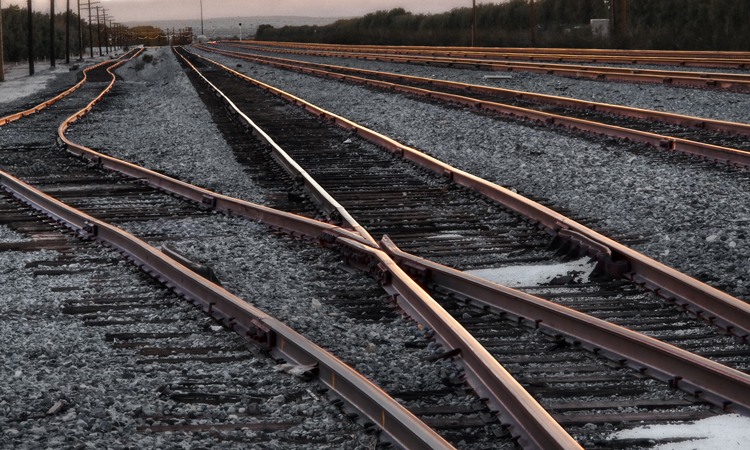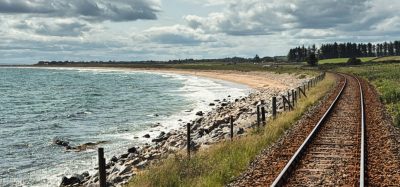Transparency, learning and a positive safety culture
Posted: 29 January 2016 | Chris Carr | No comments yet
Chris Carr, Head of Safety at the European Railway Agency (ERA), reflects on rail safety performance data for 2014 at a European level, and examines how the industry should work together to address future challenges and create an encouraging safety culture.


The beginning of a year is traditionally a moment of reflection; we think about the past, our families and loved ones, and usually we promise to do better next year. For us at ERA, we have recently received the safety performance data for 2014 and have had a chance to see what the picture looks like at a European level. Some good news was that the number of fatalities continued to fall. However, precursors across all categories increased in 2014 and significant accidents went up for the first time in 10 years. What we also know from the history of major railway accidents, is that even in Member States where the numbers of accidents with fatalities are low, this performance on its own is not a good indicator for the risk of catastrophic accidents. Apart from the tragic human cost, rail businesses are very sensitive to catastrophic accidents, more so perhaps than other transport modes.
The recent success at COP21 offers opportunities for rail, given its strong environmental credentials, but rail remains an expensive business and railways across Europe face challenges from alternative modes. The changes in the Fourth Railway Package are intended to create a better framework for industry to respond to this competition. What is clear is that we need to ensure that innovation and change can be harnessed to maintain one of rail’s competitive advantages: it’s relatively strong safety performance. We need better safety, not just more safety.
Whilst the application of safety management systems and risk assessment are used to support safety in a shared system, rail, in common with other industries, is increasingly focused on the need for a positive safety culture to get the best out of our people, frameworks and tools. Safety culture drives increasingly risk-based regulatory frameworks, by optimising safety management systems and creating assurance in the safety of the rail system.
This risk-based approach to regulation allows:
- A better use of everyone’s resources
- A reduced regulatory burden on the rail sector
- A more open market for new services and companies (through more efficient rules) and,
- In itself, contributes to a better cultural focus on improving safety, rather than ‘ticking boxes’.
To achieve this, we will need to address the challenges of creating strong, high-performing organisational cultures that have a focus on safety, as well as making transparency a pillar of how we work together, if we are to achieve the vision of the European railway system as a world-leader in safety and a vibrant, successful transport sector.
There has been a lot of discussion about the changes coming for vehicle authorisation, ERTMS and safety certification in the technical pillar of the Fourth Railway Package, but in this article I’d like to address the less talked about new requirement; the requirement to ‘promote a culture of mutual trust, confidence and learning…’. This development of a positive safety culture requires leadership. There are some encouraging signs when we look to the committed safety programmes in some railway organisations. Building this trust is not easy – it takes time and effort to establish and can be broken by a single act.
Whilst technical harmonisation of the European railway system is a work in progress, there are some aspects of safety that are fully harmonised; the nature of accidents and human performance.
Accidents have common features, not just across the railway system, but across industries. We know that there are rarely simple, single causes of major accidents, but we also know of course the temptation to seek simple answers and create a feeling that justice has been done. Just as staff across the rail sector use their skill and commitment to ensuring that most days are safe days on the railways, we also know that humans make mistakes, particularly when the odds are stacked against them. In these circumstances we can even predict the way in which humans err.
In the aftermath of any accident, we see stories of courage and bravery and often the very positive characteristics of human nature. We are also all suddenly wise. Very often the warning signs of a problem were known to someone, but somehow the message didn’t get through. The creation of an ethos of learning and the drive to continually be better is an essential element of a positive safety culture.
Since accidents rarely have a simple single cause, even if the various investigations do establish negligent behaviour, it is important that the search for understanding and improvement does not end there – a good system should as far as possible prevent single failures from resulting in accidents. Or, to put it another way, a good system should not depend on the ability of humans to perform at 110% all the time. It follows that to support an ethos of learning, people are held accountable for negligence or fraud, but that individuals are not be punished for honest mistakes or failures of the system.
A leadership commitment to understanding all the complex causes of an accident will strengthen organisational learning and provide the best insurance against future accidents. Without it we will relearn lessons the hard way.
A key part of learning is sharing information. Across the industry, we see some very positive examples of behaviours and systems designed to improve transparency and the sharing of information, where staff are encouraged to speak out when there’s a problem and where they are protected when they do. But these systems are not used everywhere and there is too often very little sharing across borders. Better communication and enhanced openness across organisations and national boundaries will accelerate learning and help us predict and prevent accidents. When reflecting on safety culture, we looked across a number of industries and found many positive examples where these specific challenges have been overcome. One that stood out in the area of healthcare was a CEO commitment amongst competing organisations ‘not to compete on safety’. Where they knew of a risk or were using a method to better manage patient safety, they shared the knowledge in full transparency. It’s not always easy. It takes mutual trust and a wider, longer-term view of commercial risks, but I think we would all recognise it is the right thing to do.
The recast of the railway safety directive will create an obligation on any actor to share information on safety risks associated with defects, construction non-conformities or malfunctions of technical equipment. This is the right thing to do, but it requires trust between the different actors of the railway system, there will be issues of commercial confidentiality to consider and the different judicial systems that exist across Europe. It will need leadership to affirm that whilst the railway actors are in competition, there is a benefit to all in improving safety for passengers, customers and investors. As we start 2016, I’m optimistic. I see clear signs that industry leaders are committed to this and in many cases have been pursuing this before the legal requirement was conceived, but it delivers more and creates greater confidence if we all do this together. The legal text also creates the possibility for the Agency to create a tool to support this knowledge exchange and the Commissioner has asked the Agency to press ahead with this work. We are keen to play our part and work with the railway sector to make this a reality.
At an organisational level, by supporting individual performance, behaviours and compliance, a good ‘safety culture’ is considered to have a positive influence upon an organisation’s output, reliability, competitiveness and profitability. This view has been supported by the experience across other industries such as aerospace, manufacturing, construction, agriculture, off-shore oil and gas, highway safety, maritime and healthcare, where its influence on safety performance indicators such as injury rates, accident rates and patient safety has been demonstrated.
A positive safety culture generates capability and commitment to safety; we don’t just say safety’s important, our actions show safety is important. One railway organisation set itself the mission of ‘everyone home safe every day’. If we come together to generate a positive safety culture, supported by transparent sharing of safety information, we will be closer to making that mission a reality for Europe.
Biography


Global Railway Review Autumn/ Winter Issue 2025
Welcome to 2025’s Autumn/ Winter issue of Global Railway Review!
The dynamism of our sector has never been more apparent, driven by technological leaps, evolving societal demands, and an urgent global imperative for sustainable solutions.
>>> Read the issue in full now! <<<
Issue
Related topics
Fourth Railway Package (4RP), Infrastructure Developments, Safety, Security & Crime Management







